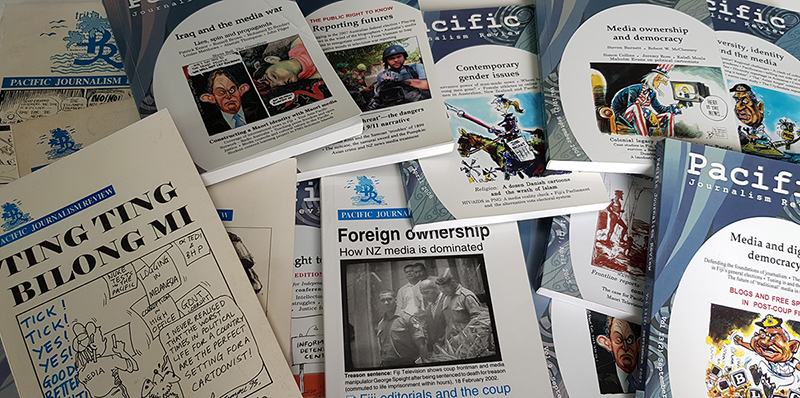Tuwhera expands the PJR ‘critical inquiry’ archive

Tuwhera, the open access repository and publisher of Auckland University of Technology, has added 16 years of back copy editions of Pacific Journalism Review to the digital resource.
The full text articles from a further 24 editions have been added, including all the original issues published by the University of Papua New Guinea and the University of the South Pacific.
Some of the research includes the Sandline mercenary crisis in Papua New Guinea, the 10-year Bougainville conflict and the Fiji military coups.
READ MORE: Pacific Journalism Review - Twenty years special edition
PJR now has 964 research articles and reviews on its Tuwhera open access database – the largest single collection of Pacific media research, scholarship and analysis.
Many of the articles also feature research in Asia, Australia and New Zealand, with contributing authors and editors who are members of the Asian Media Information and Communication Centre (AMIC), Asian Media and Communication Congress (ACMC), Journalism Education and Research Association of Australia (JERAA), Journalism Education Association of New Zealand (JEANZ) and Media Educators Pacific (MEP) prominent.
Writing a reflective article marking the journal’s achievements on the 20th anniversary of publication in 2014, Brisbane media educator Dr Lee Duffield wrote:
“Pacific Journalism Review since its inception has always emphasised its regional identity, adopting its own ‘Pacific’ style of discourse and inquiry.”
26th year
The journal, founded at UPNG in 1994 and now published by AUT, is in its 26th year of publication.
All the articles added to the archives here were published prior to 2011.
Five editions were published at UPNG and four at USP while the rest of 41 editions are from AUT, beginning in 2003.
Many global issues such as media freedom and journalist safety, media accountability systems, communication in development, conflict reporting, climate change journalism, human rights and social media, gender and indigeneity have been examined.
Welcoming the launch of PJR, Dr Margaret Obi, then head of UPNG’s South Pacific Centre for Communication and Information in Development (SPCenCIID), wrote in the first edition: “The issue that is most prevalent in PJR is that of professional ethics, responsibility and accountability by journalists and media agencies and their role in informing and being informed without fear or favour.”
Founding editor Professor David Robie, director of the Pacific Media Centre at AUT, says PJR is more than a research journal. He believes it has developed a unique character of engaged “critical inquiry”, as represented by its Frontline section encouraging journalism-as-research methodology.
“As an independent publication, PJR has given strong support to investigative journalism, socio-political journalism, political economy of the media, photojournalism and political cartooning in its almost three decades of publishing,” he adds.
Associate editor Philip Cass says that as PJR is the only journal covering journalism in the Pacific and Asia, the archives would prove to be an invaluable resource for academics and journalists.
“PJR provides a unique record of issues, viewpoints and research from academic and media practitioners,” he says.
The journal’s current editorial team is editor David Robie, associate editor Philip Cass, Frontline editor Wendy Bacon, assistant editors Khairiah Rahman and Nicole Gooch, and designer Del Abcede.











